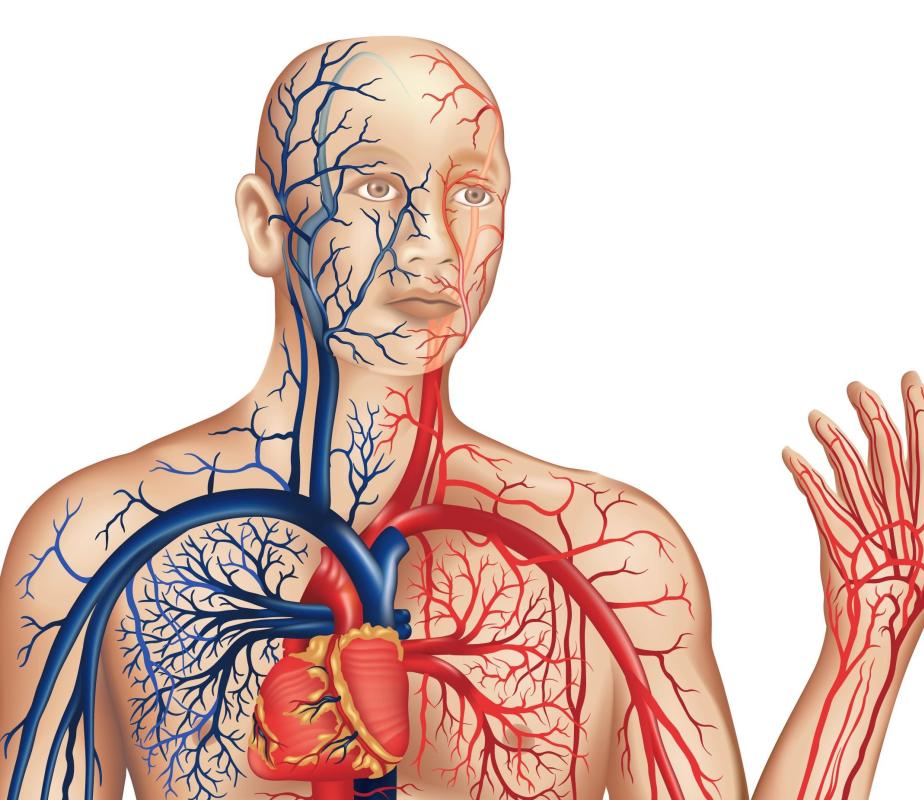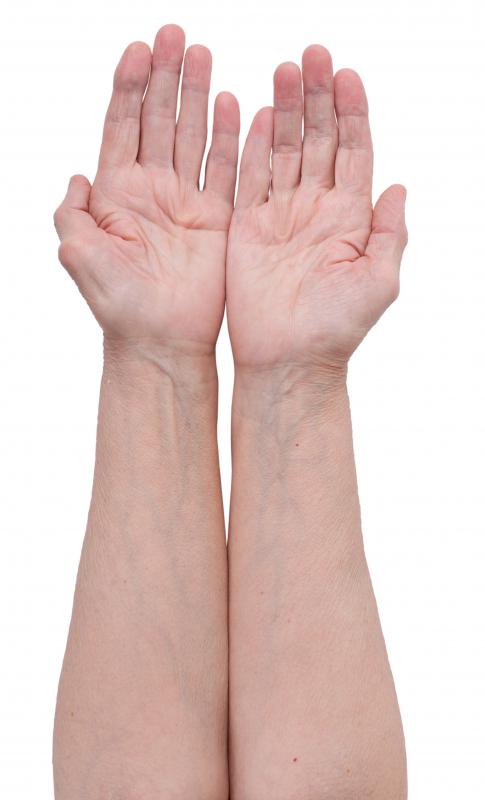At TheHealthBoard, we're committed to delivering accurate, trustworthy information. Our expert-authored content is rigorously fact-checked and sourced from credible authorities. Discover how we uphold the highest standards in providing you with reliable knowledge.
What is the Function of the Circulatory System?
The function of the circulatory system is divided into two parts. It delivers nutrients to the cells of the body through the blood, which is pumped by the heart and carried to the tissues and cells through the blood vessels. Another function is carried out by the lymphatic and immune systems. The lymphatic system helps regulate the body's fluid composition, while the immune system also helps to rid the body of foreign organisms like bacteria.
The cardiovascular system can be divided into the heart, the blood, and the blood vessels. This system carries blood both away from the heart and back to it. The blood flowing away from the heart carries oxygen to the body's cells, and the returning blood carries carbon dioxide that is a waste product of the cells' activities. The heart is a muscular organ that keeps the blood in constant motion to support the life of the body.

There are three types of blood vessels. Arteries carry the oxygen-containing blood to all parts of the body. Veins complete the circle by return the blood containing carbon dioxide so that it can be exhaled. Capillaries are small blood vessels that connect the two at the level of organs and tissues. They both deliver oxygen to the tissues from the arteries and return carbon dioxide from it to the veins.

In addition to carrying oxygen and carbon dioxide, blood itself has many other functions. One of these is to deliver substances that are produced in specialized organs to other parts of the body. Blood is made of plasma, which is mostly water and a small amount of proteins, and formed elements in about equal parts. Formed elements include platelets and cells such as red and white blood cells.

The lymphatic vessels help maintain the balance of fluid in the body. They do this by collecting water that has escaped from the blood vessels, especially capillaries, and returning it to the cardiovascular system. Inside lymph vessels, this fluid is called lymph. Lymph nodes clean the lymph and sometimes become swollen in cases of infection.
Providing the body with immune defense is also a function of the circulatory system. The immune system is a division of the lymphatic system as a whole. Lymphocytes are immune cells that attack organisms like fungi and bacteria. Lymphoid organs, such as the spleen, also assist in the immune function, and lymphoid tissue helps the body fight infection in exposed areas like the respiratory system.
AS FEATURED ON:
AS FEATURED ON:
















Discuss this Article
Post your comments